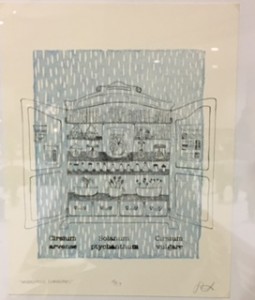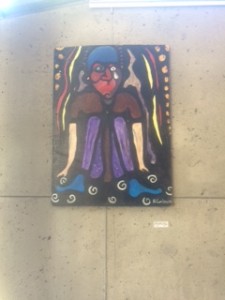On Wednesday before house dinner I attended the poisonous plant reception. I was expecting to see real poisonous plants, but looking back, it wouldn’t make much sense to have poisonous plants in a dining hall. Instead, there was a series of art works including lithography, screen prints, relief prints, mono prints, and stenciling. The works were created by the students in the Intro to Print Media class. The professors of the course worked with Professor Todd Bittner and went to the plantations to see some poisonous plants. After learning about the different types, their effects and uses, and how to identify them, they created the art works that are now featured in the dining hall.
My favorite piece was titled “Herbaceous Curiousness”. Herbaceous means relating to herbs. The piece featured a large beautiful cabinet filled with different kinds of plants in jars and pots with the names of three different poisonous plants. Since I didn’t get to learn much about the actual plants at the reception, I read about one of the plants online, the solanum ptycanthum or eastern black nightshade. The foliage and unriped berries of the plant are toxic and very dangerous to birds, mammals, and curious children.




